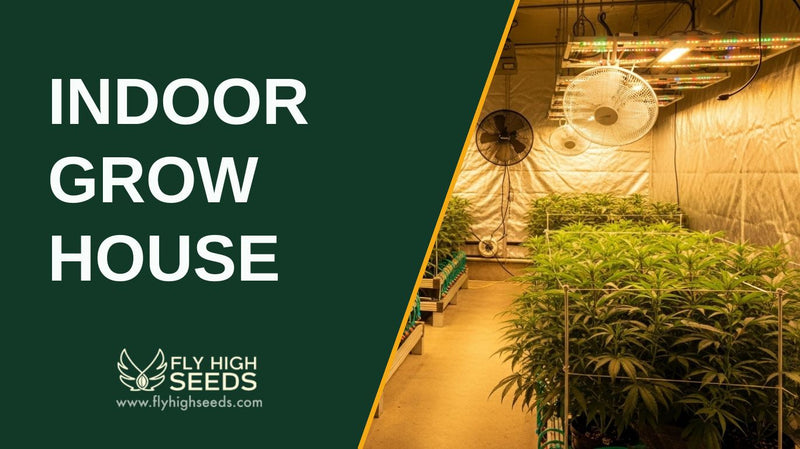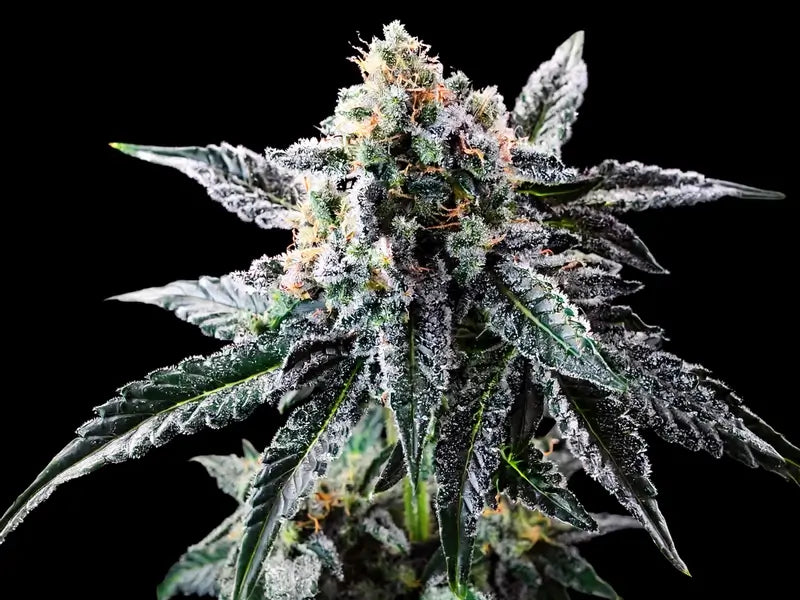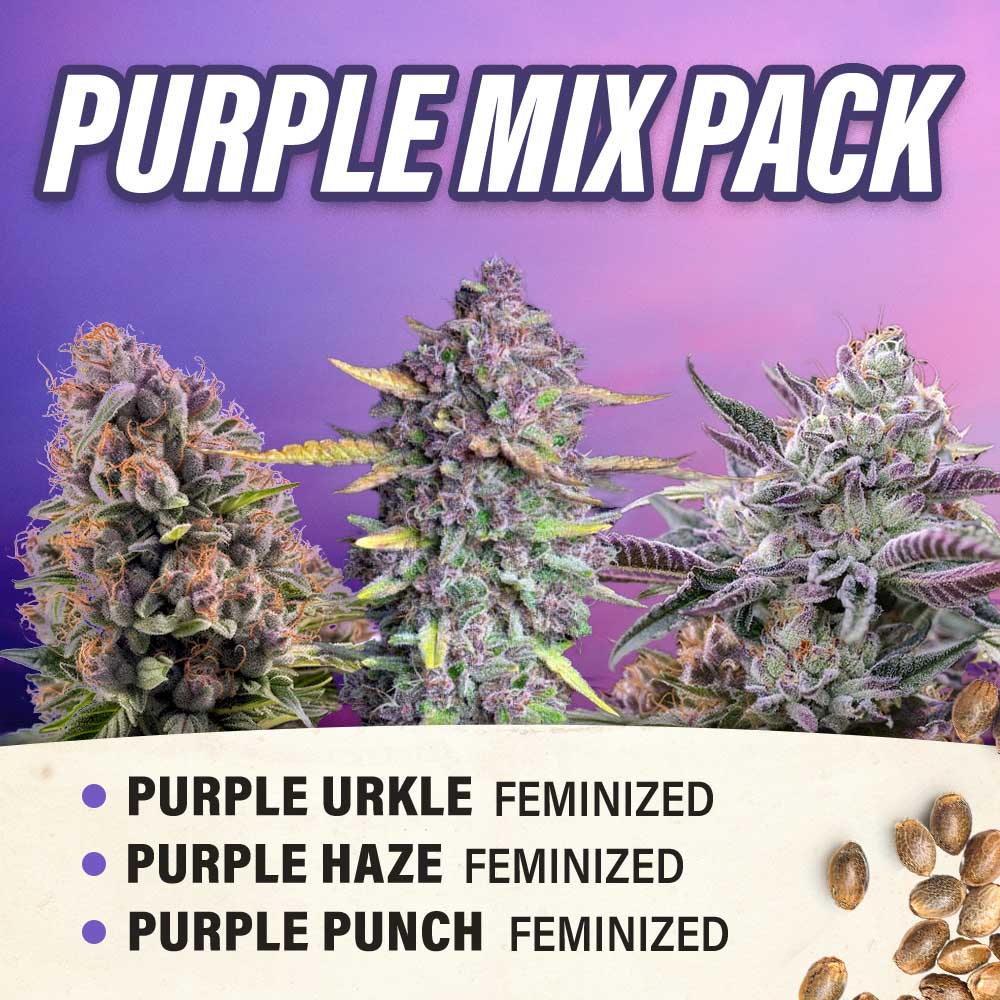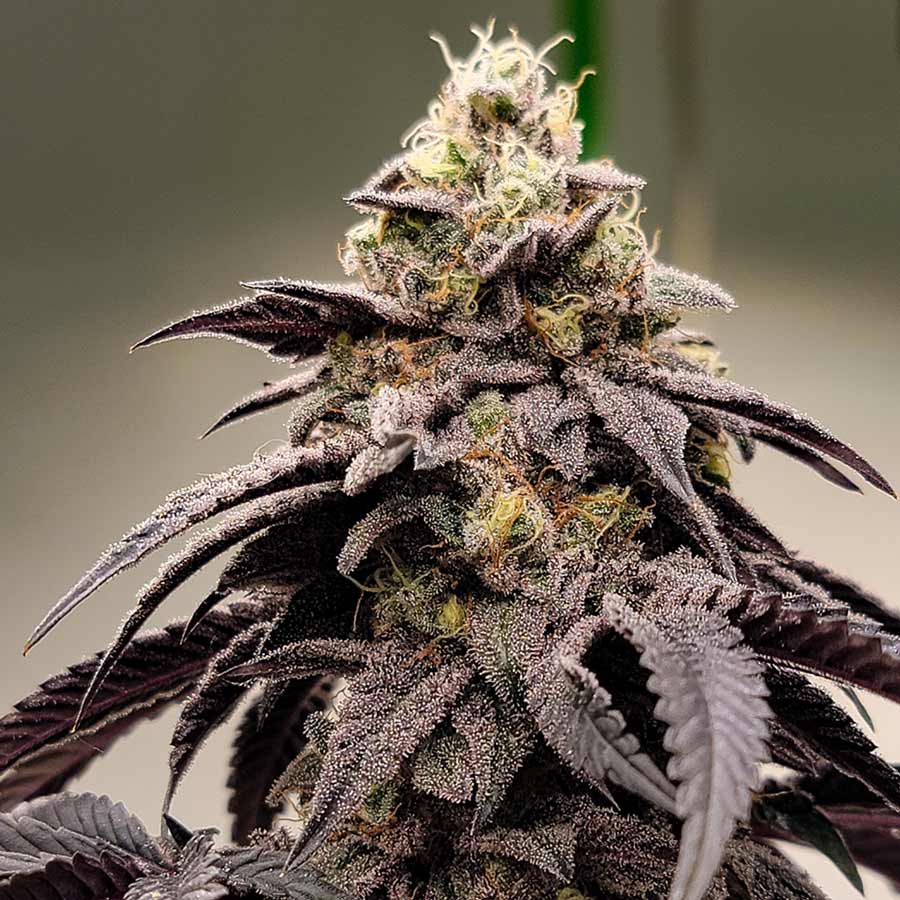Cannabis Indoor Grow House: 10-Step Beginner Setup Process

Starting your own cannabis indoor grow house can feel overwhelming at first, but with the right guidance, it becomes a manageable and rewarding experience. Whether you're converting a spare room, basement, or setting up tent kits, this beginner-friendly guide will walk you through each step of the process—helping you create the perfect growing conditions for healthy plants and a quality harvest, all from the comfort of your home.
What is an Indoor Grow House?
An indoor grow house is a controlled environment specifically designed for cultivating plants, such as cannabis, inside an enclosed space like a room, tent, or basement. It uses systems like grow lights, fans, exhaust, and timers to replicate and manage the light spectrum, temperature, humidity, and other conditions that plants need to thrive.
By taking full control of these factors, growers can nurture crops through every stage—seedling to harvest—while minimizing pests, improving quality, and optimizing energy use.
Indoor Vs Outdoor Grow House
When deciding between an indoor or outdoor grow house, it’s important to understand how each setup impacts your plants, environment control, cost, and overall results. Here’s a quick comparison to help you choose the right fit:
|
Feature |
Indoor Grow House |
Outdoor Grow House |
|
Light Source |
Controlled with grow lights and light spectrum |
Natural sunlight |
|
Environment Control |
Fully adjustable (temperature, humidity, etc.) |
Dependent on weather and seasons |
|
Security |
More secure and private |
Exposed, with higher risk of theft or pests |
|
Pest Management |
Easier to prevent and control |
Higher risk of infestations |
|
Energy Usage |
Higher due to lighting and climate systems |
Lower, relies on natural elements |
|
Setup Cost |
Higher upfront cost (equipment, tents, fans, etc.) |
Generally cheaper to start |
|
Grow Cycles |
Year-round harvesting possible |
Limited by climate and seasons |
|
Space Needs |
Fits small areas (tents, rooms, basements) |
Requires outdoor land or backyard space |
|
Crop Quality Control |
More consistent and customizable results |
Subject to environmental variations |
|
Maintenance |
Requires more active control and monitoring |
Lower day-to-day input, but less predictable |
How to Set Up a Grow House Indoors

Setting up a grow house indoors may seem like a big task, but with the right system in place, it’s entirely manageable—even for beginners. Below is a simple step-by-step guide to help you create a healthy, secure grow space from scratch.
1. Choose the Right Space
Pick a space in your home that’s easy to access, close to water and power, and can be sealed off—like a spare room, basement, or a closet. Make sure it has enough room for your plants to grow vertically and horizontally, and that you can hang grow lights and install fans if needed.
2. Set Up the Grow Tent or Room
Use a grow tent kit for convenience, or build out a dedicated grow room. Your space should be light-proof, well-insulated, and easy to clean. Tents are great for beginners because they come with reflective interiors that help optimize the light spectrum and energy use.
3. Install Grow Lights
Choose full-spectrum LED or HID grow lights that match your grow room size and plant type. Hang them securely at the right distance from your plants, and use light timers to mimic natural light cycles. Adjust the light intensity and schedule based on each stage of plant growth.
4. Create Ventilation and Exhaust Systems
Proper airflow is key to avoiding mold and pests. Set up intake and exhaust fans to move fresh air in and hot, stale air out. Add carbon filters to control odor, and make sure air circulates evenly across your grow space.
5. Monitor Temperature and Humidity
Use controllers, thermometers, and hygrometers to monitor your environment. Ideal indoor growing conditions for cannabis usually fall between 70–85°F and 40–60% humidity, depending on the stage. Adjust settings with heaters, humidifiers, or dehumidifiers to stay in range.
6. Set Up Your Soil or Hydroponics System
Choose between soil (more forgiving and traditional) or hydroponics (faster growth, but more technical). Use high-quality soil that drains well and is rich in nutrients. For hydroponics, install water pumps, reservoirs, and pH controllers.
7. Plant and Nurture
Plant your seeds or clones in the prepared medium. Give them enough space to grow without crowding. Water on a set schedule and keep an eye on their health. Adjust light, water, and nutrients as your plants move through different growth stages.
8. Protect Against Pests and Mold
Check your plants daily for signs of pests or disease. Use natural pest repellents or traps if needed. Keep your space clean and avoid excess moisture buildup, especially around the base of the plants.
9. Track Progress and Make Adjustments
Use a grow journal or app to track plant growth, watering, feeding, and environmental changes. This helps you understand what works, identify problems early, and improve future grows.
10. Prepare for Harvest
Once your crop is ready, reduce watering before harvest to enhance flavor and potency. Use clean tools, and hang the trimmed plants in a dark, cool, ventilated area to dry. After that, cure them in airtight containers to lock in quality.
Benefits of Using an Indoor Grow House
An indoor grow house offers a controlled, private, and efficient way to cultivate healthy plants year-round. Here are some key benefits that make it a preferred option for many growers:
- Year-Round Growing – No need to wait for seasons; harvest crops any time of the year.
- Controlled Environment – Fine-tune temperature, humidity, and light for perfect growing conditions.
- Improved Crop Quality – Boost potency, flavor, and consistency with better control over every stage.
- Pest and Disease Management – Reduce exposure to outdoor pests and mold through isolation and monitoring.
- Discreet and Secure – Keep your grow private and protected inside your home, basement, or tent setup.
- Energy Efficiency Options – Use efficient grow lights, timers, and fans to manage usage and costs.
- Space Flexibility – Set up in small or large spaces, from closets to custom-built grow rooms.
- Faster Growth Cycles – Optimize conditions to reduce the time from planting to harvest.
- Convenience and Accessibility – Monitor and maintain your grow without leaving your home.
- Scalability – Easily expand your system with additional tents, lights, or controllers as you grow.
What to Avoid When Using a Grow House
While an indoor grow house offers many advantages, there are common mistakes that can affect your plants and final results. Here are key things to avoid:
- Overwatering – Leads to root rot and mold; only water when needed.
- Poor Ventilation – Increases risk of pests, heat stress, and stagnant air.
- Wrong Light Spectrum – Using improper lighting can stunt growth or reduce yields.
- Ignoring Temperature Fluctuations – Unstable temperatures stress plants and lower quality.
- Overcrowding Plants – Limits airflow, light exposure, and access for care.
- Skipping pH Checks – Unbalanced water or soil pH disrupts nutrient absorption.
- Lack of Pest Control – Small issues can quickly damage a full crop if not addressed early.
- Using Weak or Leaky Equipment – Cheap systems can cause damage, energy waste, or safety hazards.
- Neglecting Timers or Controllers – Forgetting light and water schedules disrupts plant cycles.
- Not Planning for Odor Control – Smells can become overwhelming without exhaust and filters.
Final Thoughts

Starting a cannabis indoor grow house doesn't have to be complicated. With a solid setup, the right equipment, and attention to each stage of the grow, you can create a reliable system that fits your space, budget, and lifestyle.
Ready to take the next step? Add your setup essentials to your cart and begin your indoor grow journey today.
Frequently Asked Questions
1. How many cannabis plants can I grow indoors legally?
The number of plants you can grow legally varies by country, state, or province. Always check your local laws and regulations before starting your grow.
2. Do I need a special license to grow cannabis indoors?
In many areas, a license is required for commercial growing, but not for small personal-use grows. Review local rules to see if registration or permits are needed.
3. What’s the best strain for beginners to grow indoors?
Indica-dominant strains like Northern Lights or Blue Dream are popular among beginners due to their resilience, shorter height, and manageable growing time.
4. How long does it take to grow cannabis indoors from seed to harvest?
It typically takes 3 to 5 months, depending on the strain, grow method, and how long you keep the plant in the vegetative stage.
5. Can I use any LED light for growing cannabis?
No—general household LEDs don’t offer the right light spectrum. Use full-spectrum grow lights specifically designed for plant growth.
6. How often should I feed my cannabis plants?
Feeding depends on the growth stage and medium. Generally, once or twice a week with a balanced nutrient mix is enough. Always follow a trusted feeding schedule.
7. Do indoor cannabis plants smell a lot?
Yes, especially during flowering. Using carbon filters and exhaust systems helps control odors effectively.
8. What’s the ideal humidity level for growing cannabis indoors?
Seedlings prefer 65–70%, vegging plants around 50–60%, and flowering plants around 40–50%. Adjust as plants mature.
9. Can I grow cannabis indoors without soil?
Yes, hydroponic systems allow you to grow in water-based nutrient solutions, offering faster growth but requiring more monitoring.
10. Is it expensive to maintain an indoor grow house?
Initial setup can be costly, but monthly costs vary based on energy use, equipment efficiency, and plant quantity. Budgeting ahead helps manage ongoing expenses.



